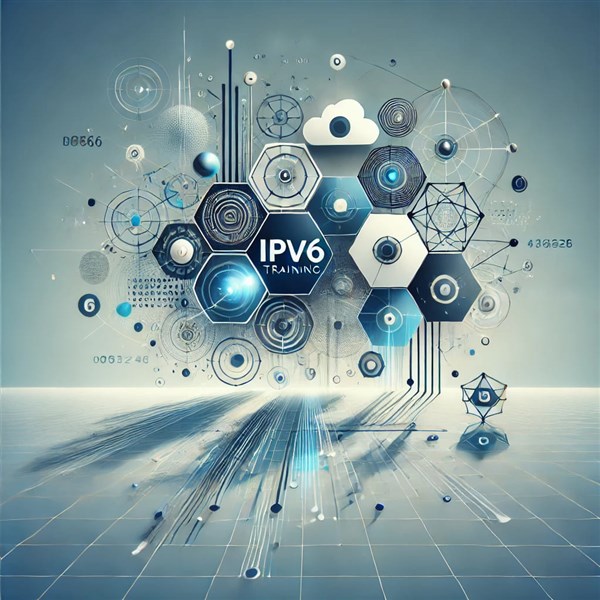We're open through the holidays to support your upskilling goals — book your session today!
We're open through the holidays to support your upskilling goals — book your session today!
Unable to find what you're searching for?
We're here to help you find it
In an age where internet-connected devices are multiplying rapidly, the world is running out of IPv4 addresses. Enter IPv6—the next generation internet protocol designed to accommodate the growing demand for unique IP addresses and support the evolution of digital infrastructure.
As organizations and service providers transition from IPv4 to IPv6, there's a high demand for skilled professionals who can architect, configure, and manage IPv6-based networks. If you're a network engineer, IT professional, or student entering the tech field, enrolling in an IPv6 training program can future-proof your career and open new opportunities.
In this blog, we’ll break down the core skills you’ll gain from an IPv6 training program, how they apply in real-world scenarios, and why this training is essential for the modern networking professional.
IPv6 (Internet Protocol version 6) is the successor to IPv4, which has been the backbone of the internet for decades. With only about 4.3 billion IPv4 addresses available—and most of them already assigned—IPv6 was introduced to offer a vastly larger address space: 340 undecillion (that’s 340 followed by 36 zeros).
But IPv6 isn’t just about more addresses. It also brings enhancements in network security, routing efficiency, auto-configuration, and mobility—making it a crucial component in technologies like IoT, 5G, and cloud networking.
Whether you’re taking an entry-level course or an advanced certification program, these are the critical skills you'll develop:
Unlike the dotted-decimal format of IPv4 (e.g., 192.168.0.1), IPv6 uses a hexadecimal format (e.g., 2001:0db8:85a3::8a2e:0370:7334). A solid training program will teach you to:
✅ Real-world benefit: Enables you to plan scalable and hierarchical address structures for large networks.
Hands-on lab work is a key component of IPv6 training. You’ll learn how to configure IPv6 on:
You’ll also practice enabling dual-stack configurations where both IPv4 and IPv6 run simultaneously.
✅ Real-world benefit: Prepares you to transition legacy networks to IPv6 while maintaining compatibility with existing systems.
Routing in IPv6 is more than just copy-pasting IPv4 commands. You’ll learn to configure and troubleshoot routing protocols including:
✅ Real-world benefit: Ensures reliable data delivery across complex IPv6 networks, especially in enterprise and ISP settings.
NDP is the IPv6 replacement for ARP (Address Resolution Protocol). You'll understand how it:
✅ Real-world benefit: Helps in troubleshooting host-to-host communication and local network issues.
IPv6 has security built into its design, but it also introduces new attack surfaces. Training includes:
✅ Real-world benefit: Equips you to maintain network integrity and compliance with cybersecurity regulations.
Since the world isn’t moving to IPv6 overnight, you'll explore transition mechanisms like:
✅ Real-world benefit: Helps organizations adopt IPv6 gradually without disrupting services.
Any good networking professional must be skilled at troubleshooting. In an IPv6 training program, you’ll master:
✅ Real-world benefit: Keeps your IPv6 networks stable, fast, and secure.
Advanced training modules cover large-scale deployment scenarios, including:
✅ Real-world benefit: Prepares you for large-scale network projects and consulting roles.
DNS and DHCP behavior changes under IPv6. Training ensures you're confident in:
✅ Real-world benefit: Helps you support end-to-end IPv6 services in enterprise environments.
Many training programs align with industry certifications like:
✅ Real-world benefit: Adds value to your resume and proves your IPv6 expertise to employers.
IPv6 is not just a networking trend—it’s the future. Countries like India, China, and the U.S. are leading the charge in IPv6 adoption. As more companies make the shift, the need for certified professionals with hands-on experience will only grow.
Here’s what IPv6 training unlocks for your career:
🔚 Final Thoughts
As the digital world moves toward scalability, automation, and innovation, IPv6 is the cornerstone of modern networking. An IPv6 training program doesn’t just teach you a new protocol—it equips you with a robust set of skills that are relevant today and indispensable tomorrow.
So whether you’re aiming for certification, a promotion, or a career switch, learning IPv6 is a smart, strategic move.
Now that you understand the key skills you'll gain from an IPv6 training program, it's time to consider where to get this training. Koenig Solutions, a leading IT training company, offers a comprehensive suite of IPv6 training courses that are designed to provide you with the skills and knowledge you need to become an IPv6 expert.

Aarav Goel has top education industry knowledge with 4 years of experience. Being a passionate blogger also does blogging on the technology niche.










